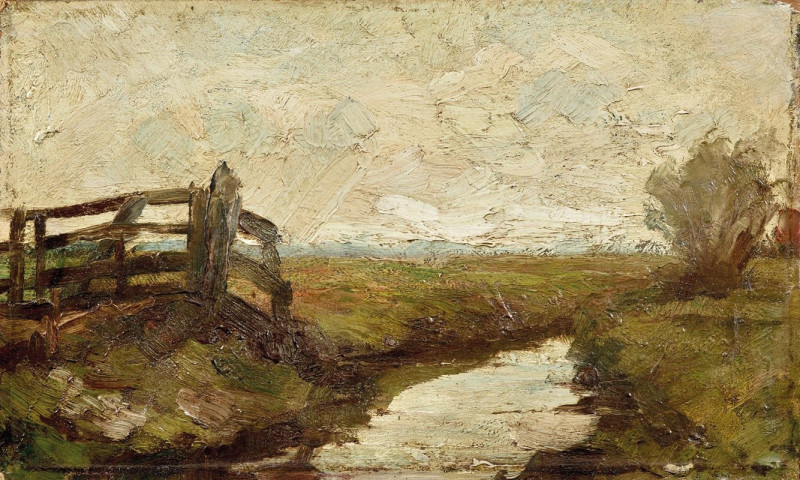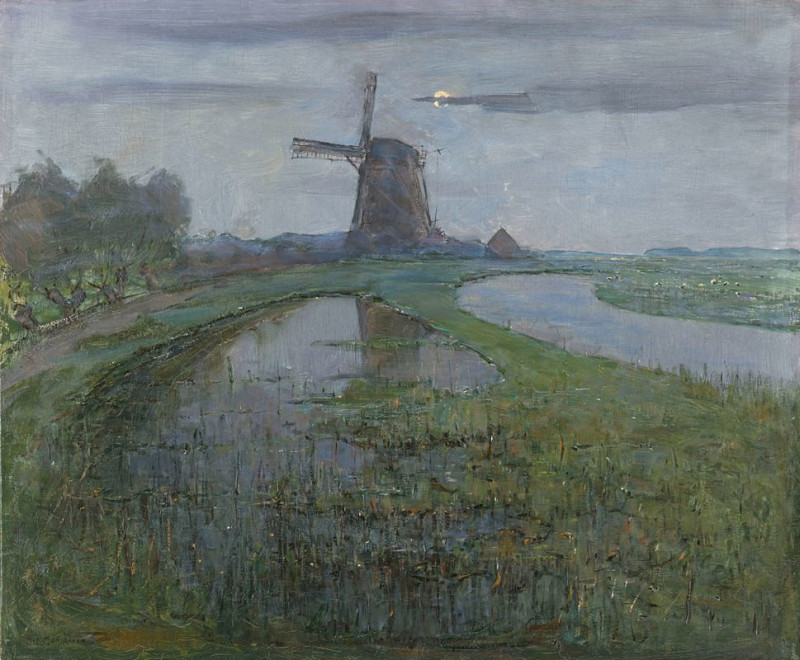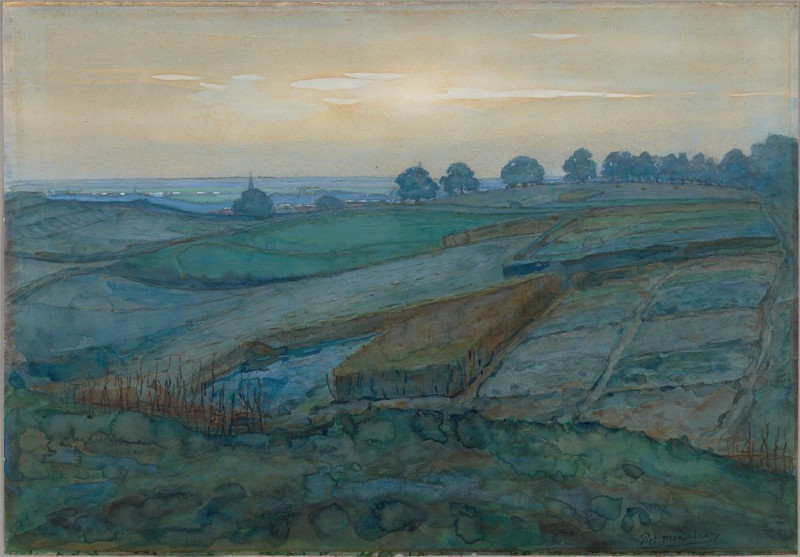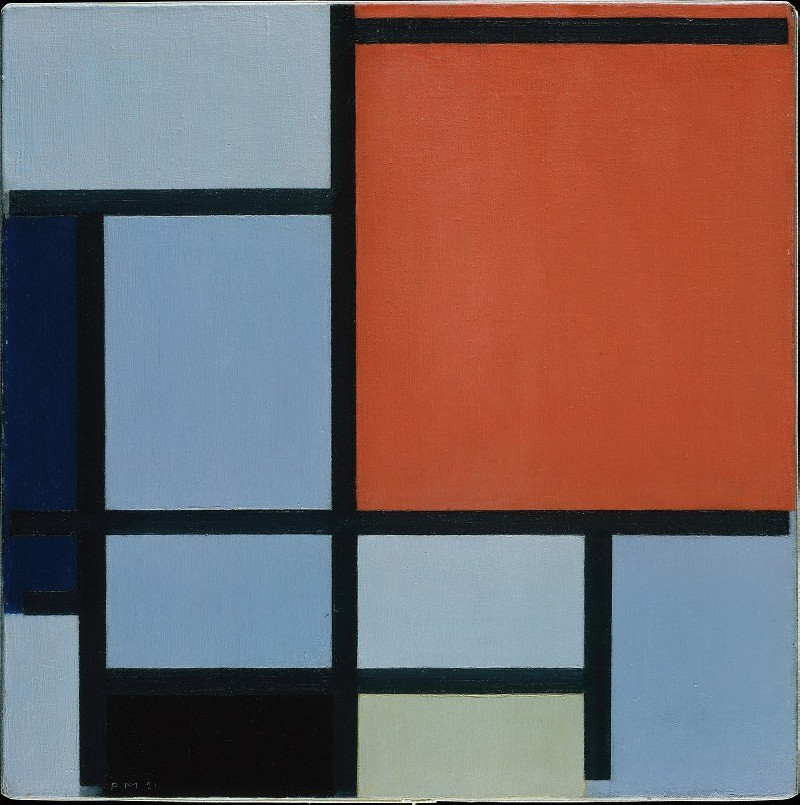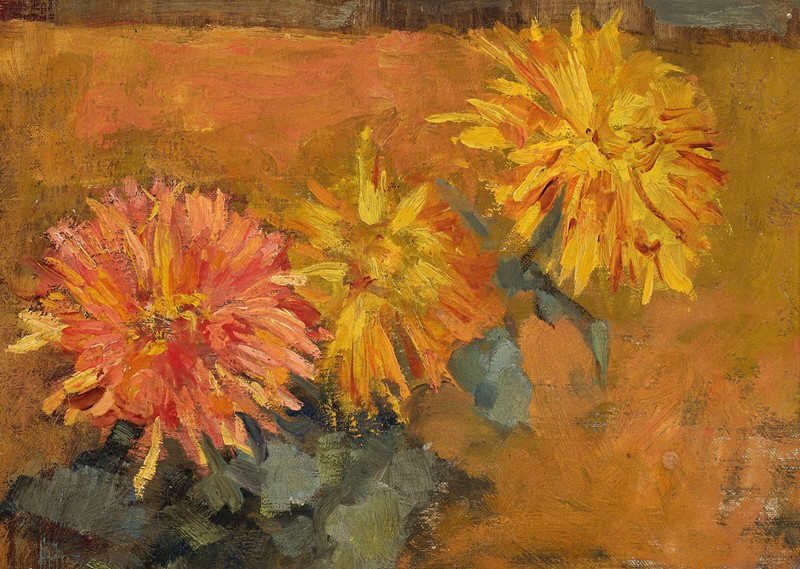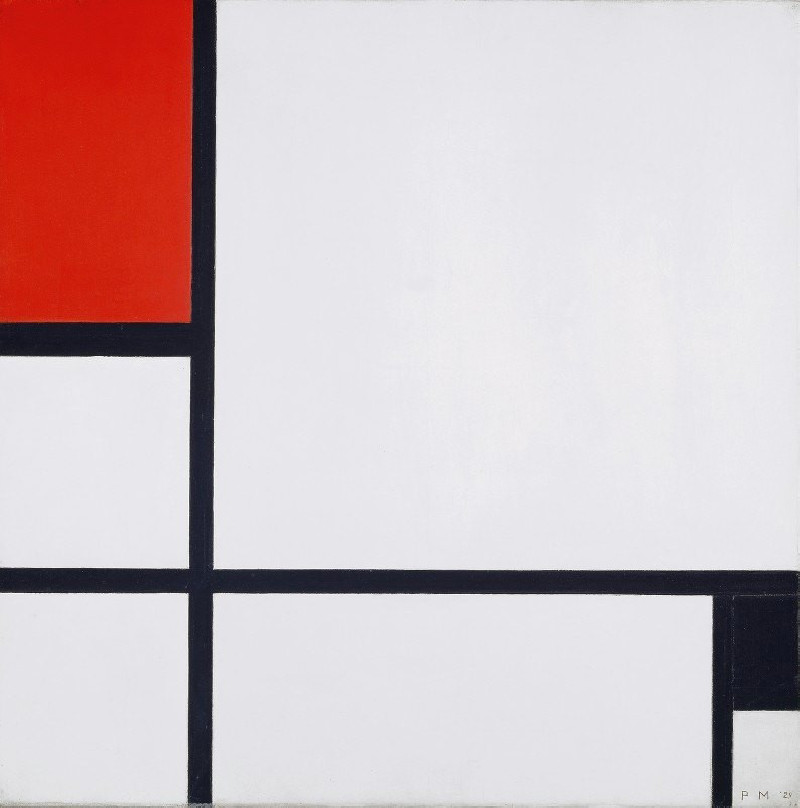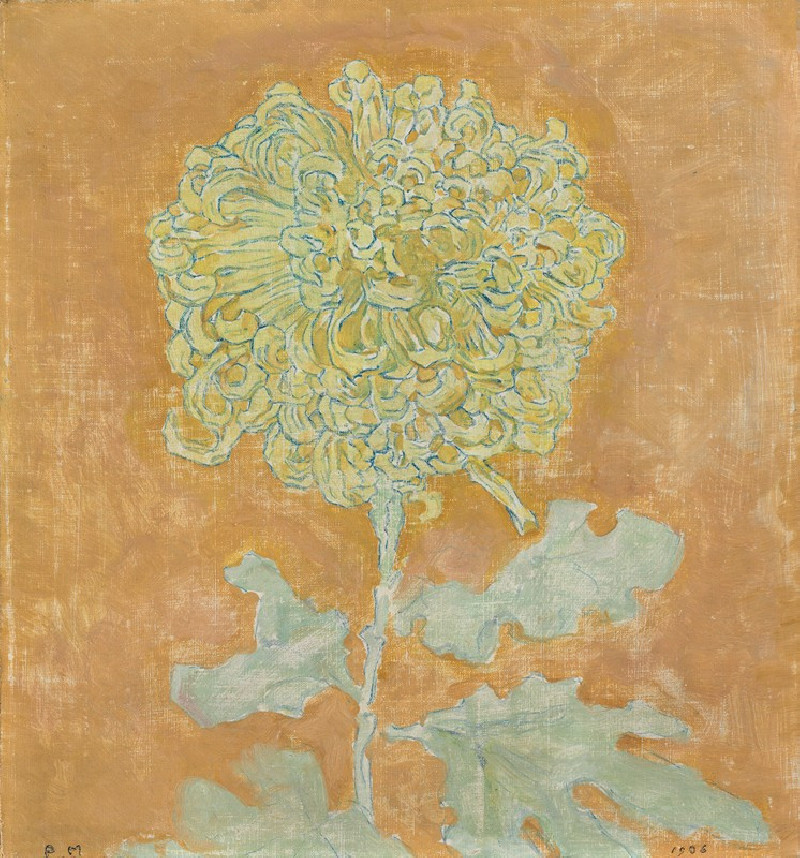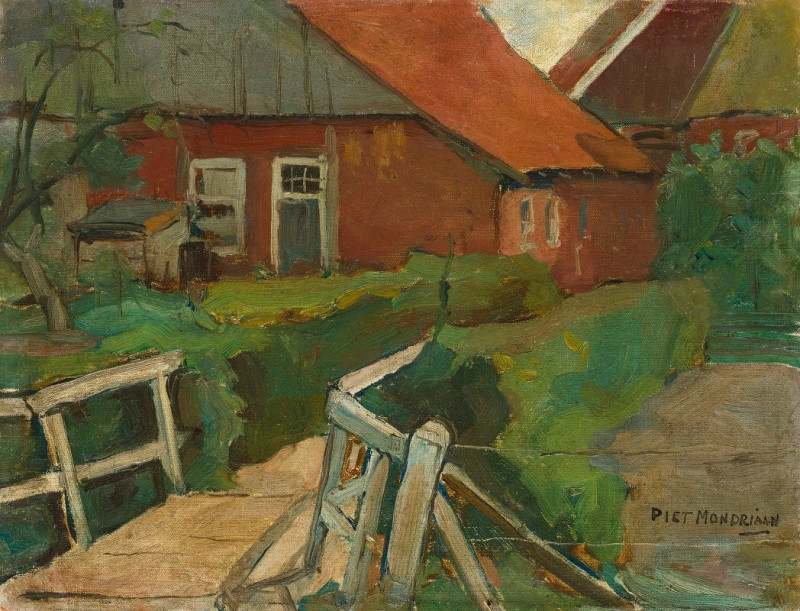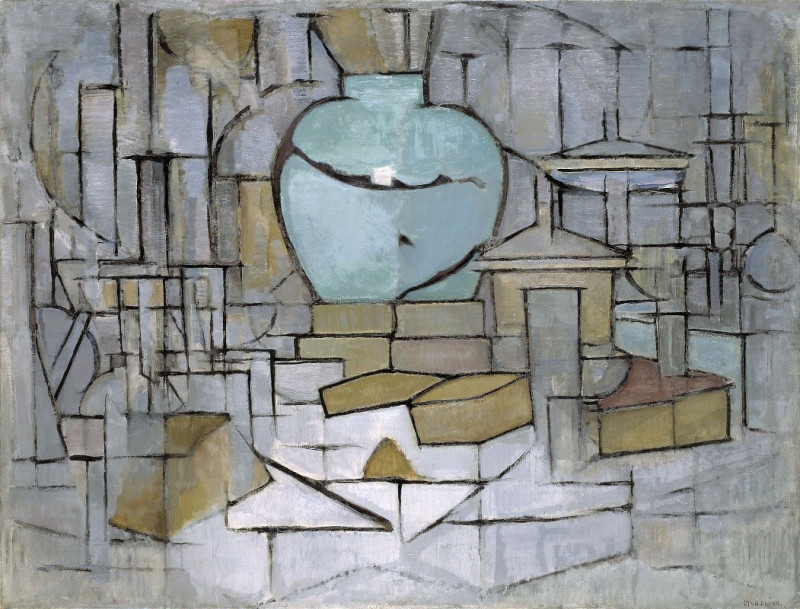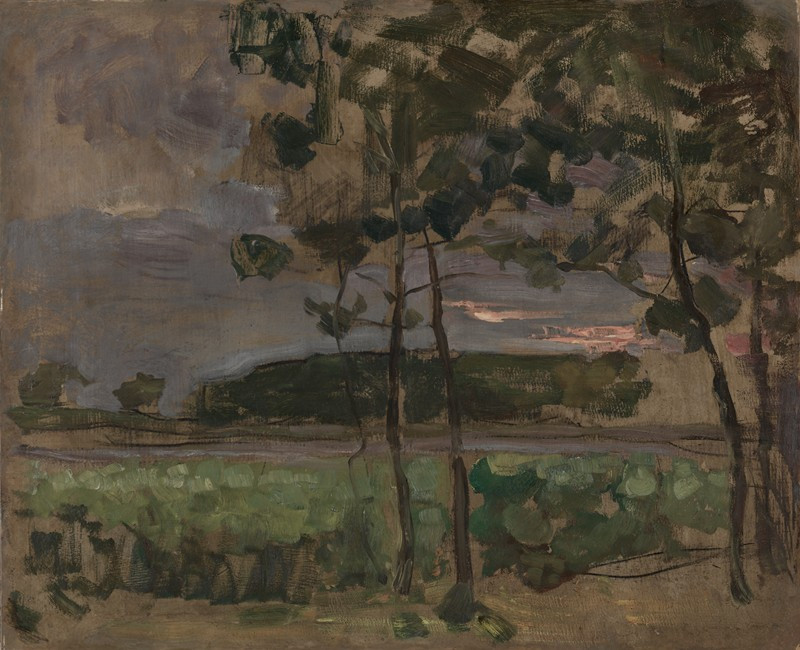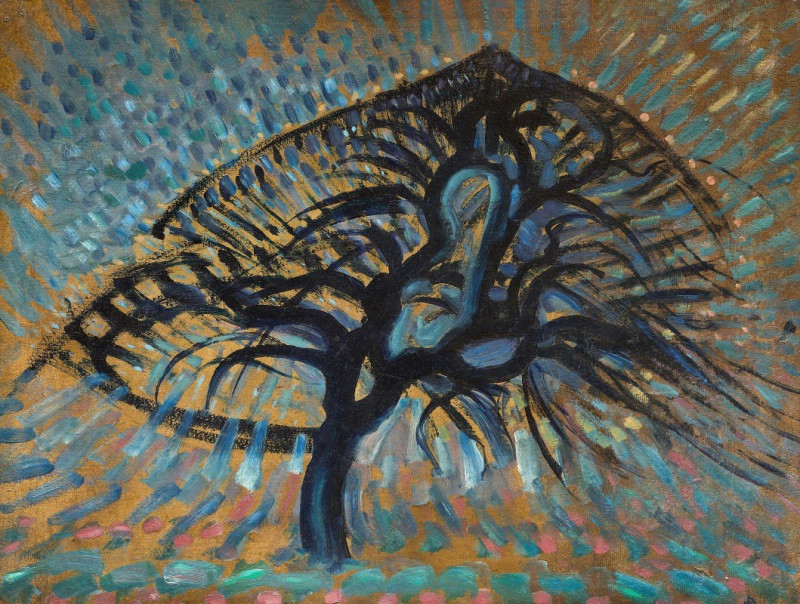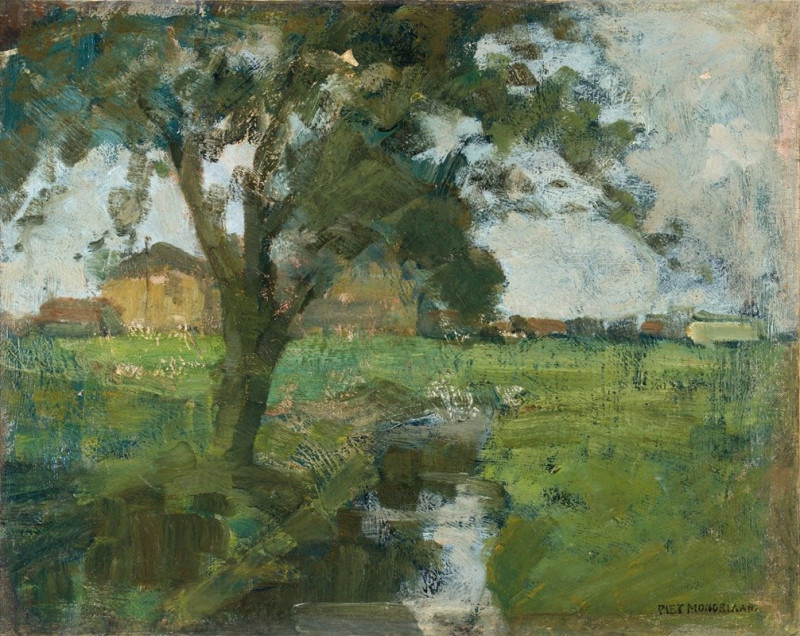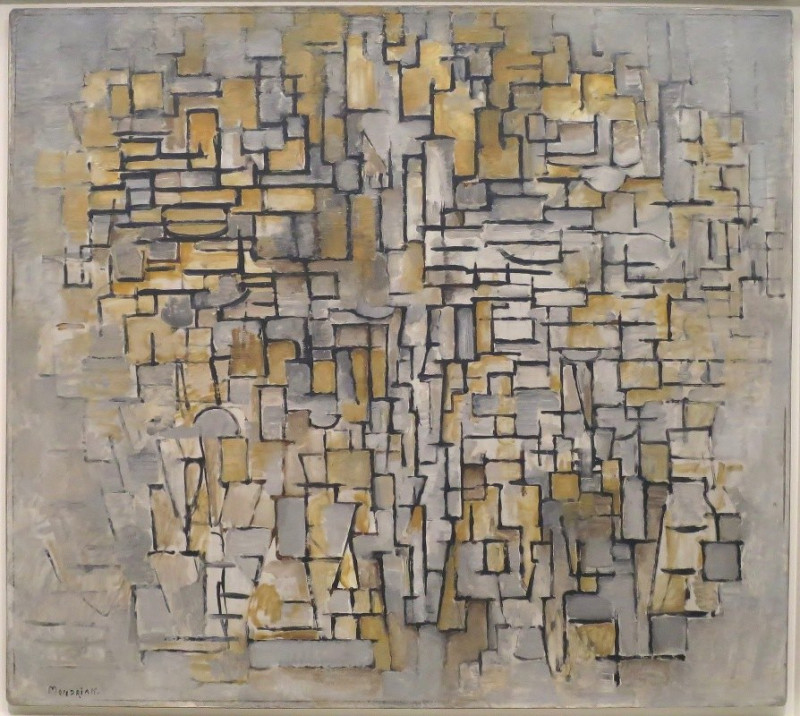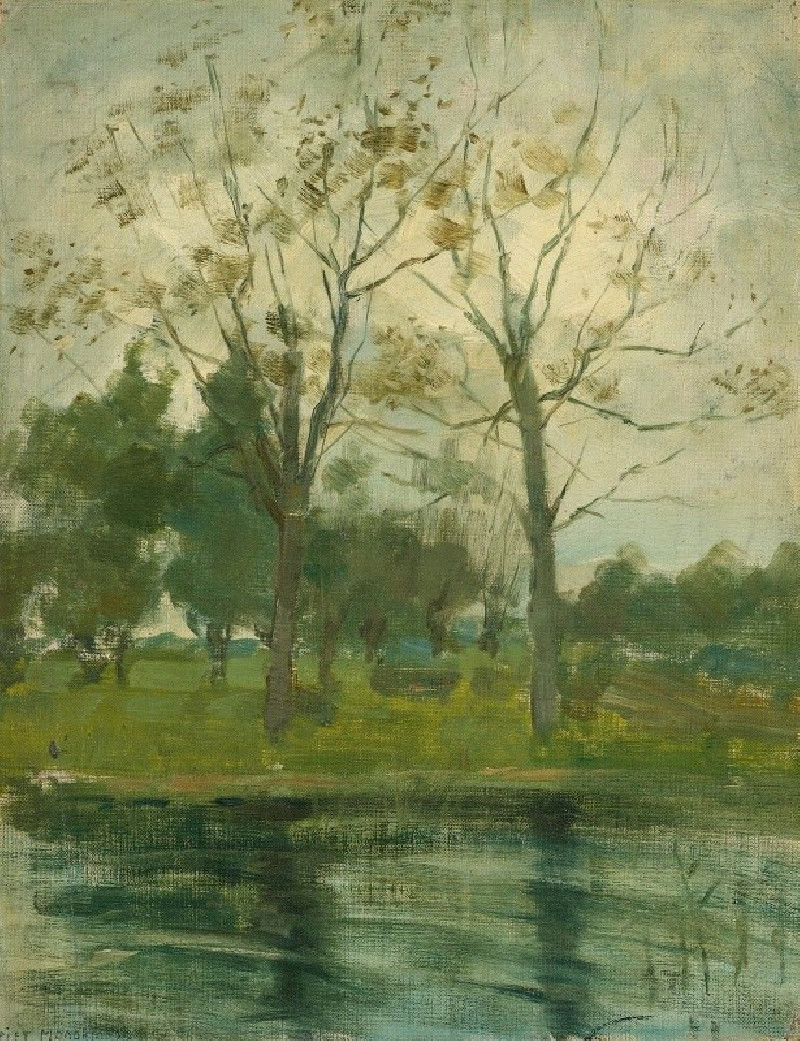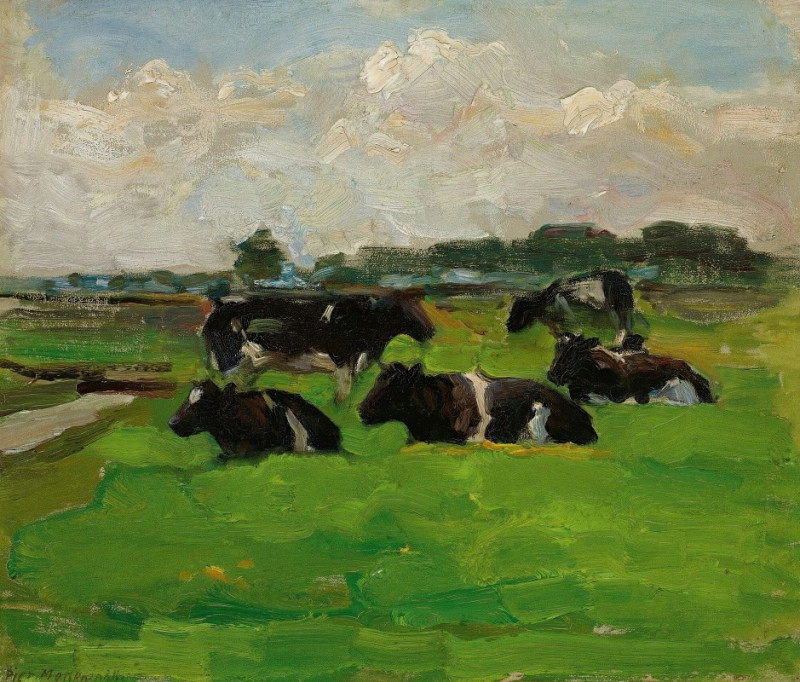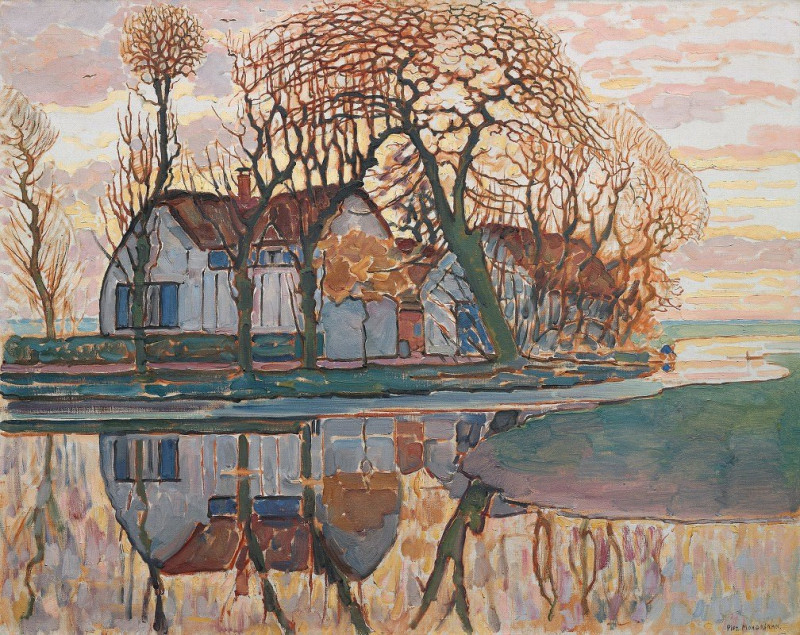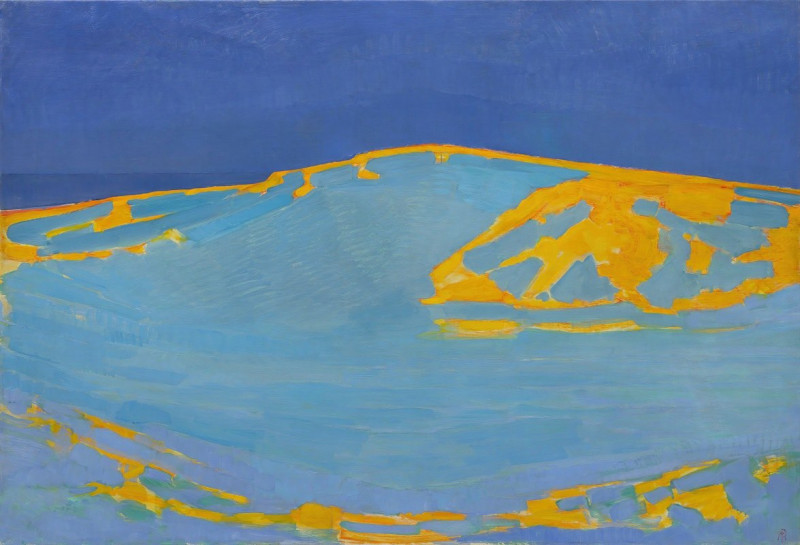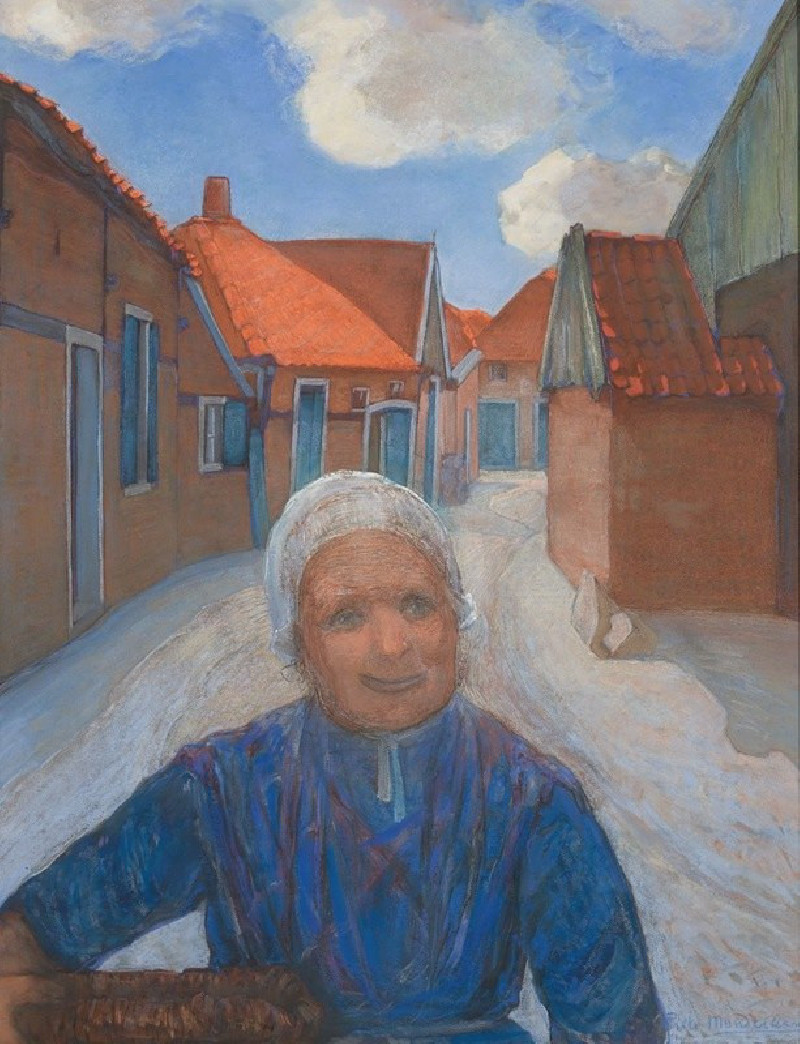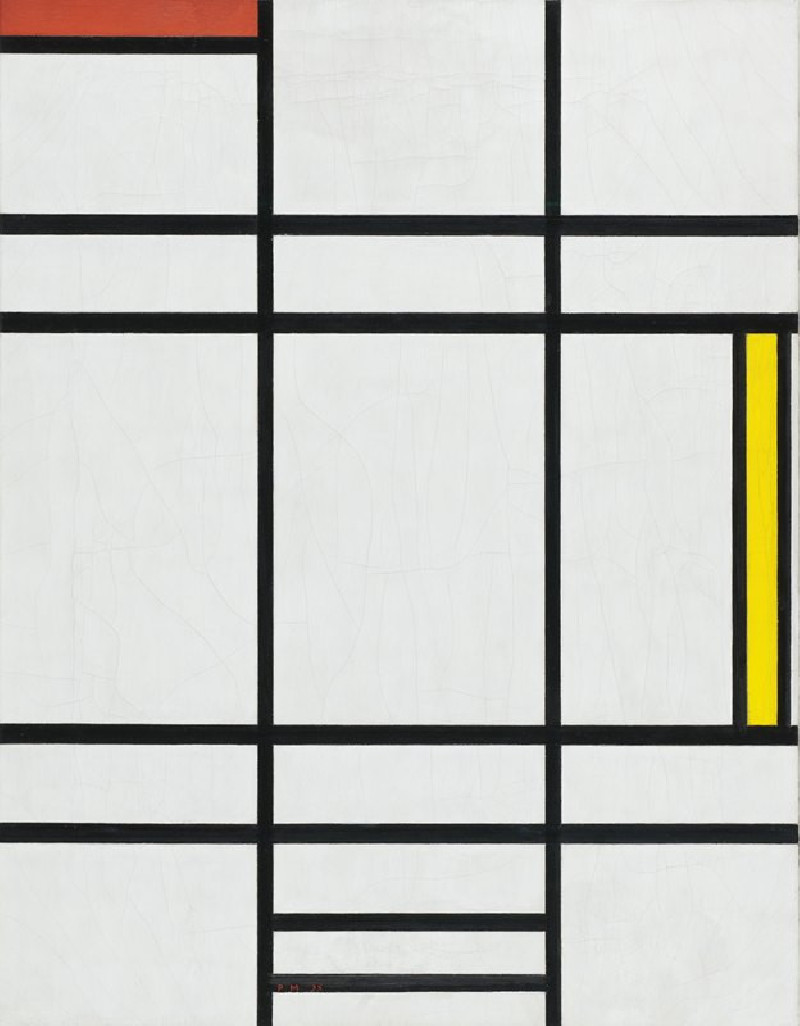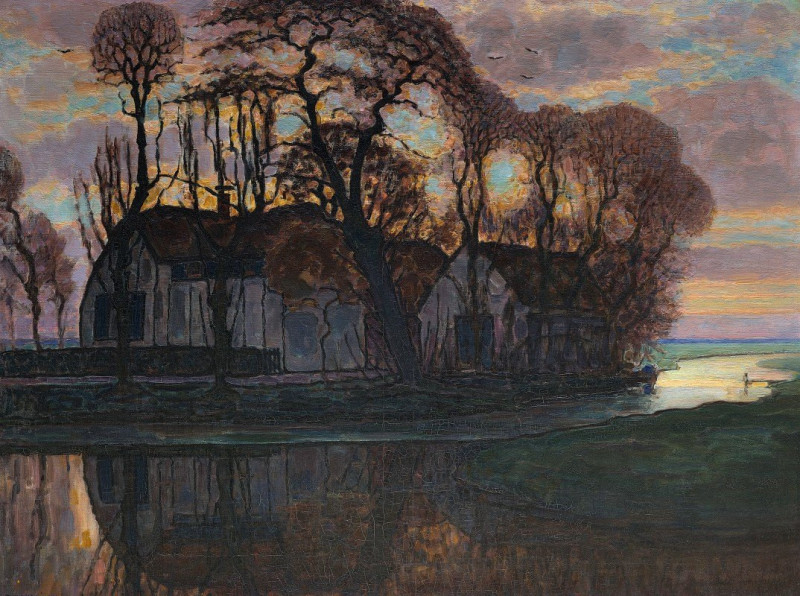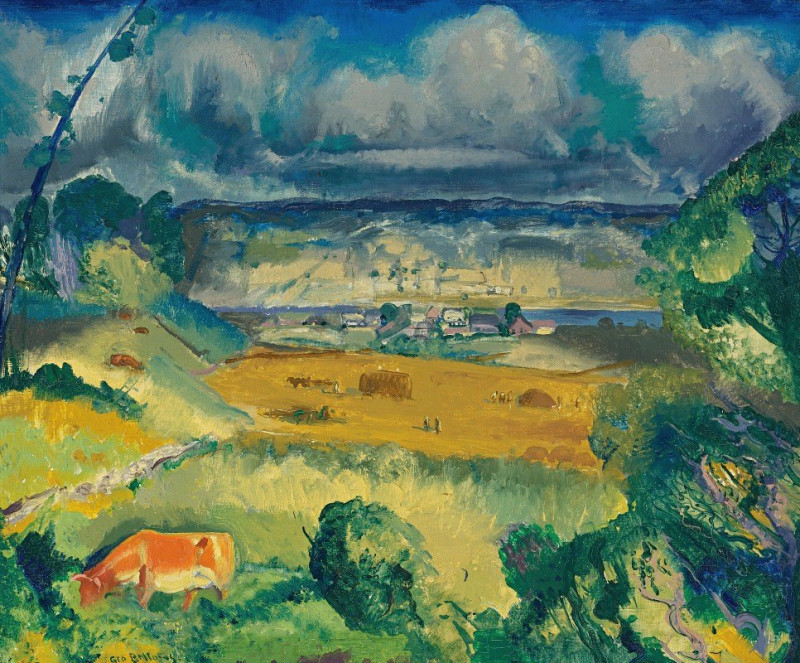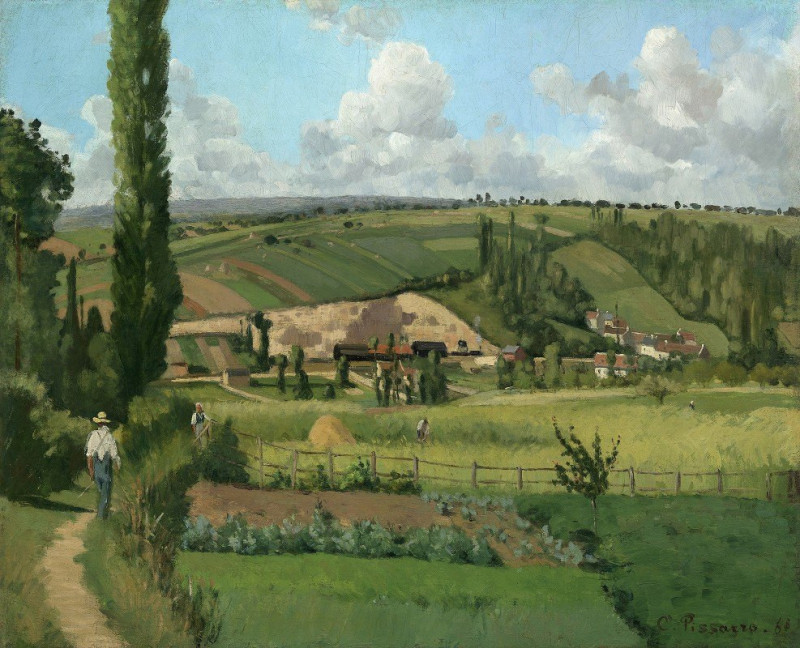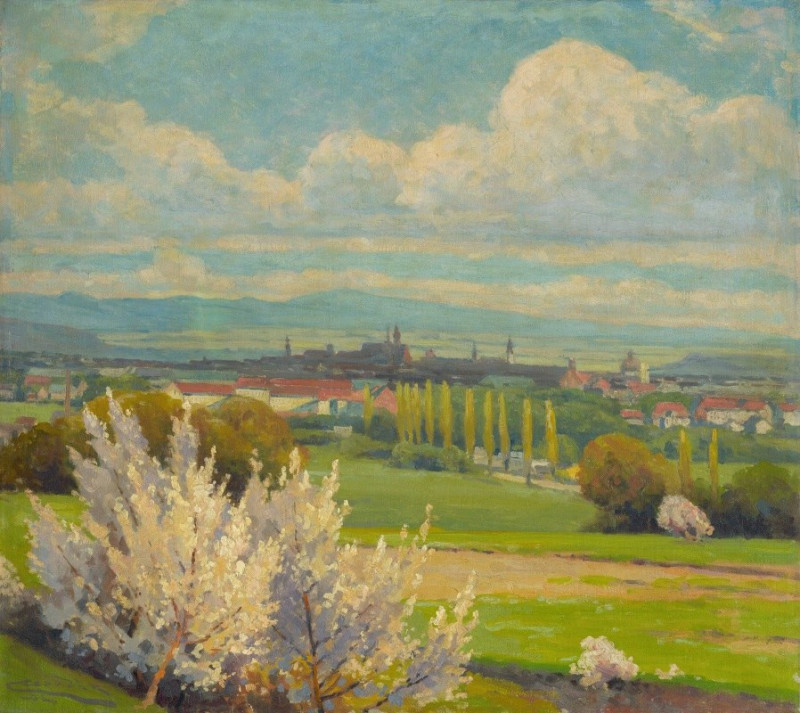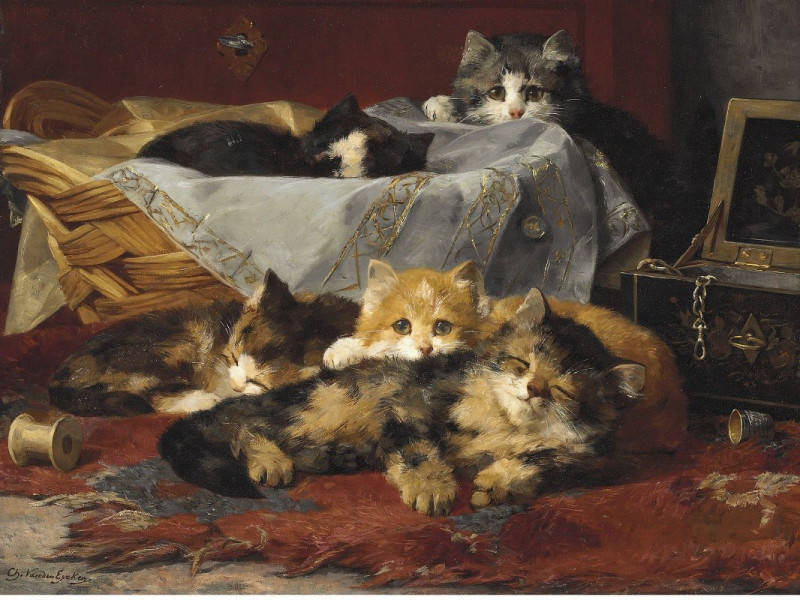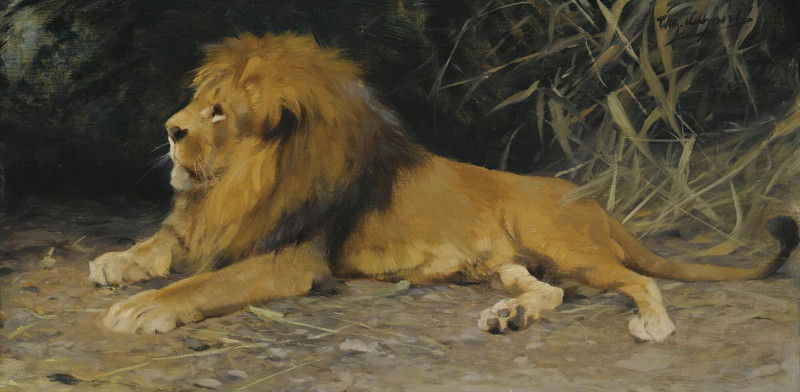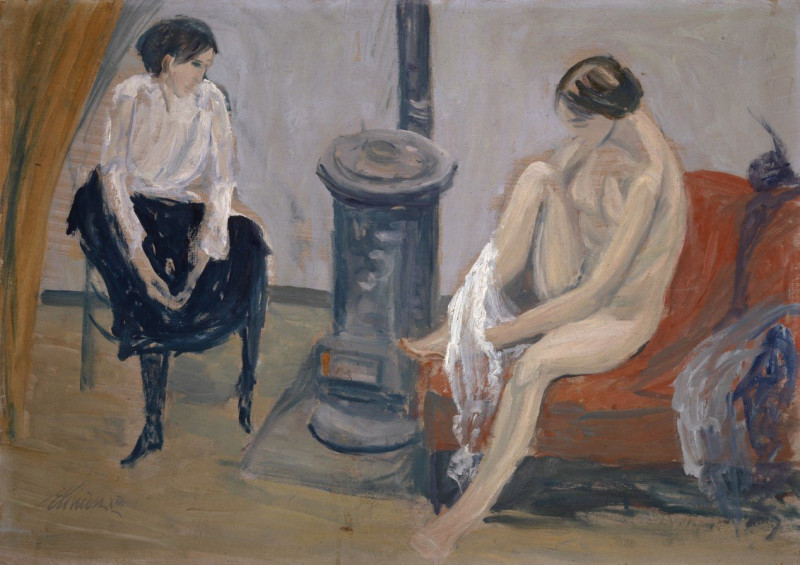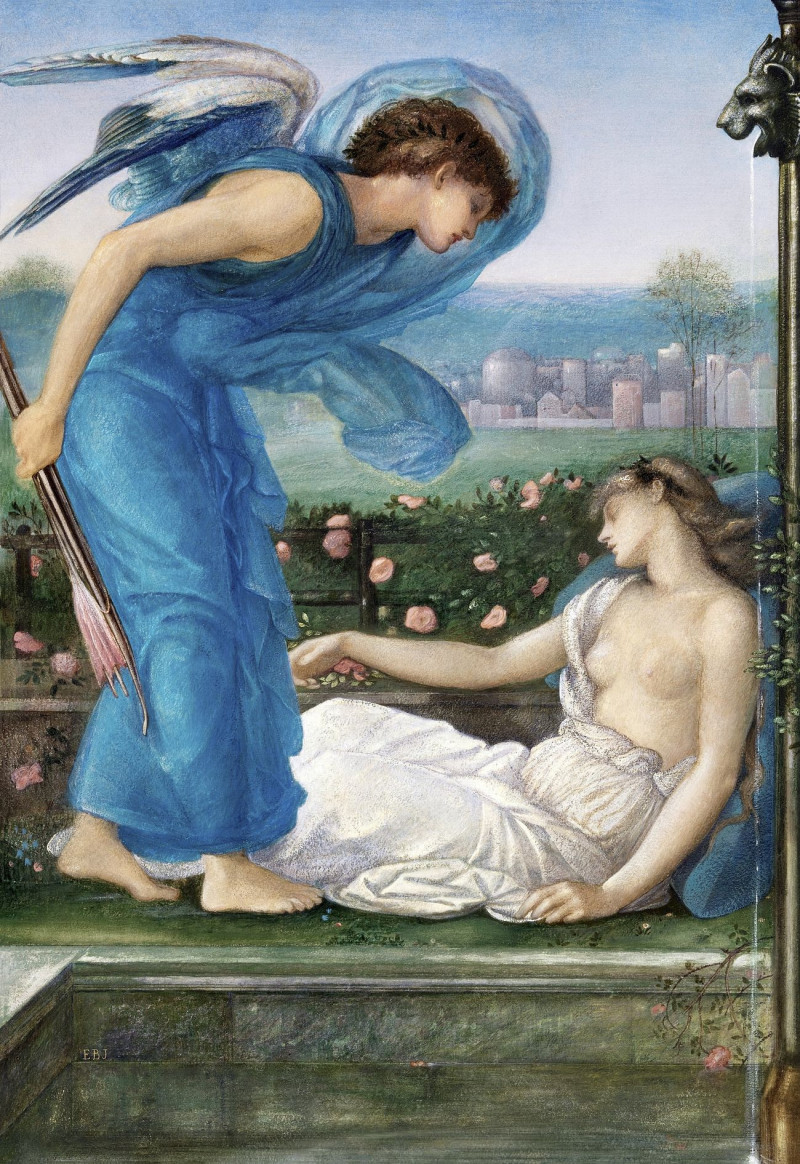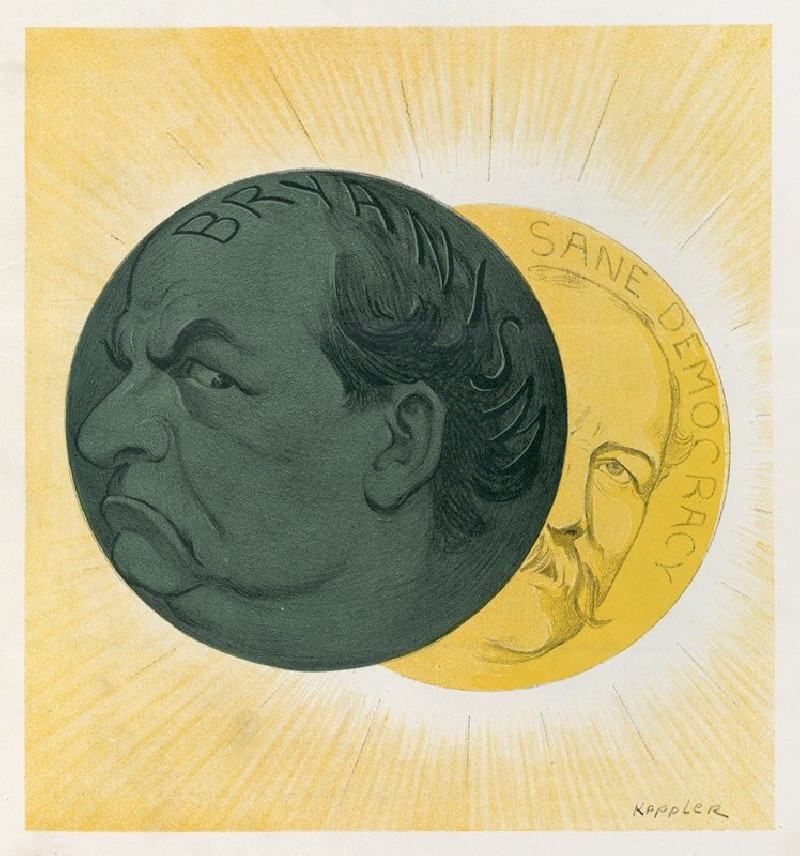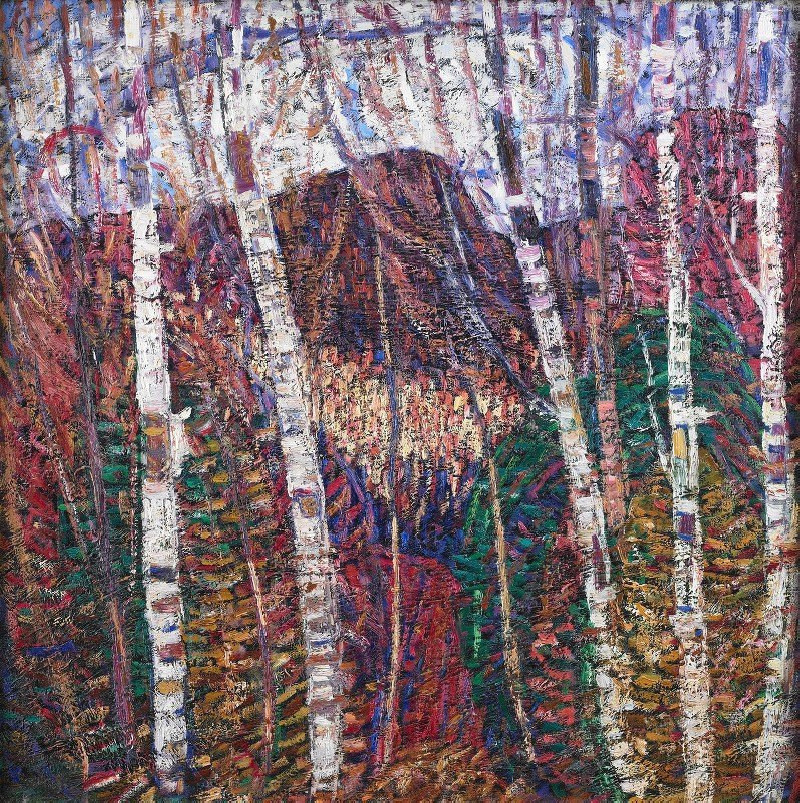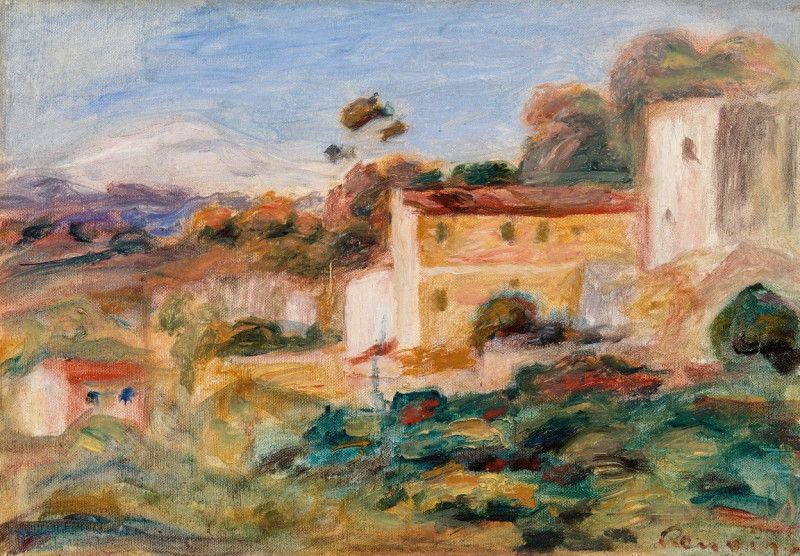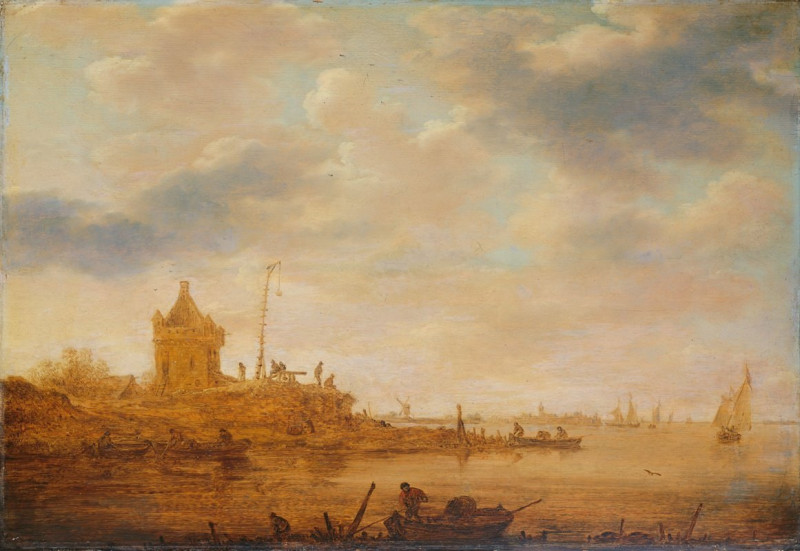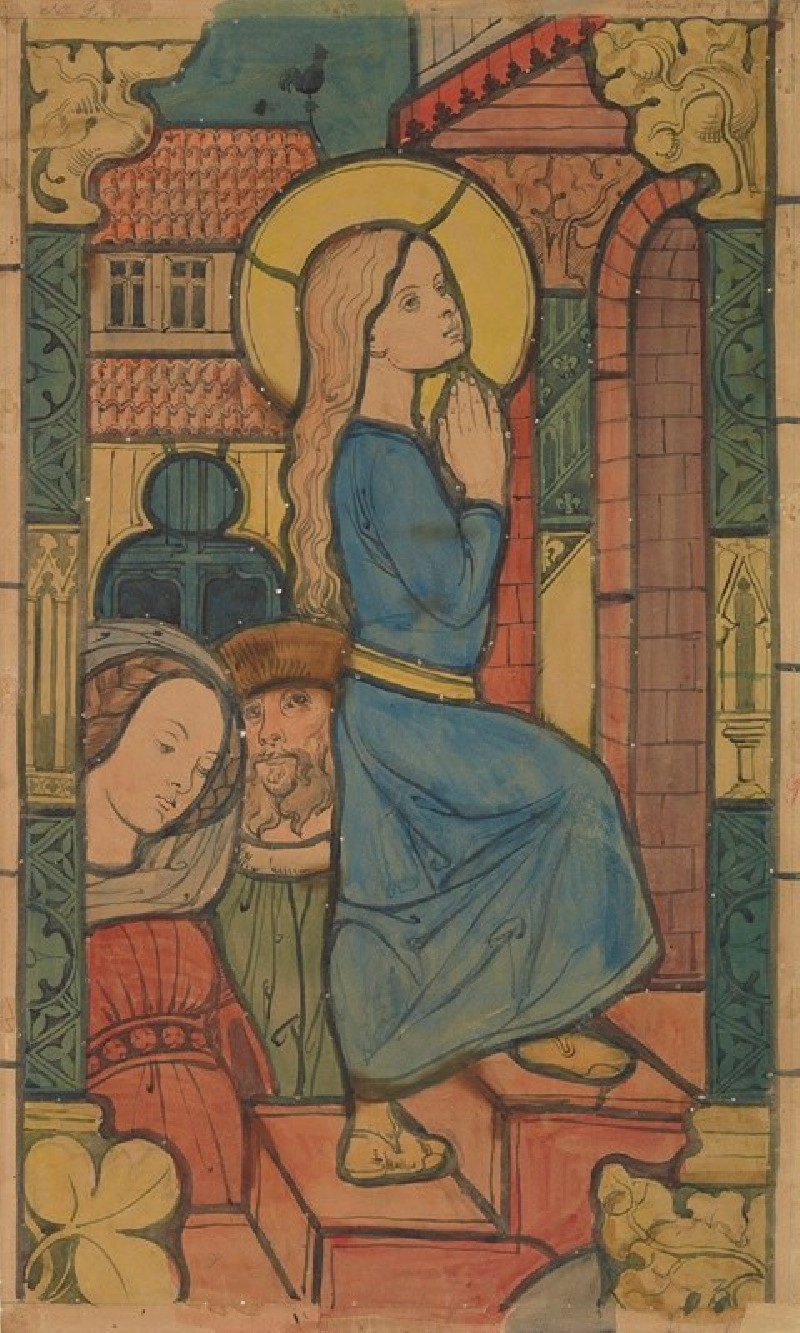Irrigation ditch with wood gate at left (1894–1895)
Technique: Giclée quality print
Recommended by our customers
More about this artwork
Piet Mondrian's painting, (1894–1895), offers a glimpse into the early artistic explorations of an artist who later became synonymous with abstract and minimalistic compositions. This work stands in contrast to his well-known grid compositions, featuring an emotive landscape scene characterized by a rustic charm and a serene ambiance.The painting portrays a simple, pastoral landscape, focusing on an irrigation ditch that gently curves through the scene, reflecting the sky's light and surrounded by lush greenery. Dominating the left portion of the canvas is a roughly constructed wooden gate, suggesting a barrier or entry into the fenced expanse beyond. The gate, while seemingly fragile against the sprawling backdrop, holds a position of significance, inviting the viewer to ponder its purpose and the rustic life it implies.Repleted with thick, tactile brushstrokes, Mondrian captures the texture of the wooden gate, the moist earth, and the vibrant foliage. The sky, painted with softer, broad strokes, contrasts with the detailed and dynamic treatment of the foreground and middle ground. This effect accentuates the open expansiveness above the dense, enclosed space near the ground, creating an engaging interplay between the elements.Though this artwork contains none of the abstract simplification that Piet Mondrian is famously associated with, it nonetheless reveals his sensitivity to the balance of composition and his early interest in the dynamic between man-made structures and the natural world.
Delivery
Returns
Pieter Cornelis Mondriaan, was a Dutch painter and theoretician who is regarded as one of the greatest artists of the 20th century. He is known for being one of the pioneers of 20th-century abstract art, as he changed his artistic direction from figurative painting to an increasingly abstract style, until he reached a point where his artistic vocabulary was reduced to simple geometric elements.

